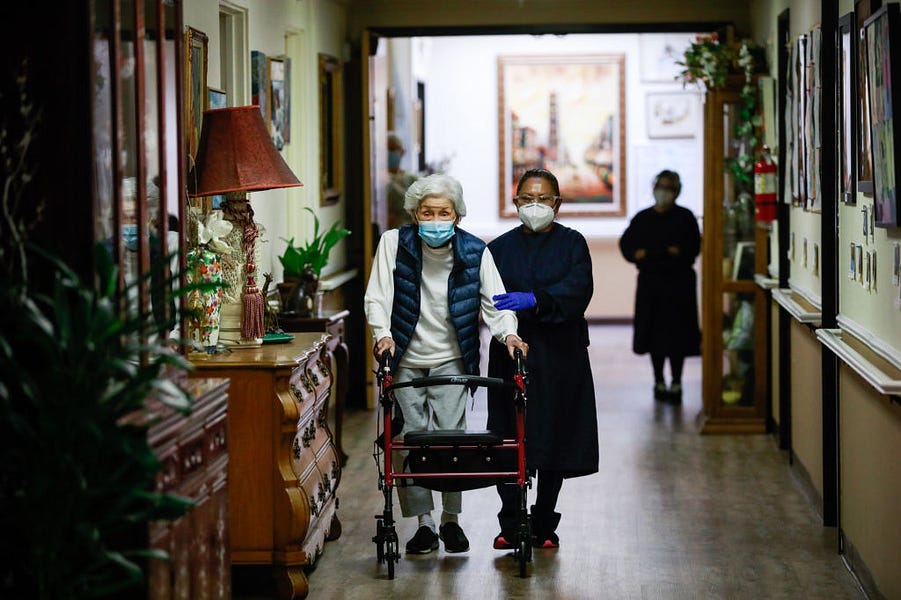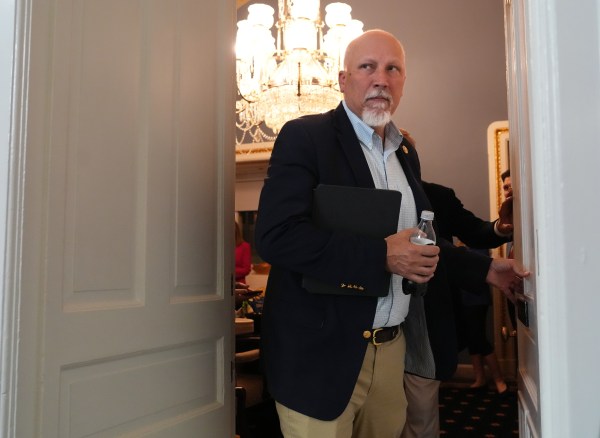Nursing homes have struggled to provide quality care for decades, and attention on the problem has never been higher in the wake of more than 200,000 COVID-19 deaths among nursing home residents.
But with the demise of the Build Back Better Act late last year, the hope of a sweeping reform agenda for long-term care (LTC) was thought to be over.
Still, President Joe Biden continues to chase LTC reform. His newest proposal—while not as expansive as the BBB’s $150 billion for home care—seeks to improve the quality of care in nursing homes that house more than 1 million aged and disabled Americans.
In and of itself, Biden’s goal of improving nursing home care is commendable. Unfortunately, his plan treats only the symptom—poor nursing home quality—not the underlying disease. To provide better care to our frail and vulnerable, we must ask ourselves why nursing homes have poor quality outcomes in the first place.
Nursing homes in the red.
Nursing homes have operated under a distressed business model for decades.
Currently, nearly 64 percent of patient days in nursing homes are covered by Medicaid, the federal-state health program that serves as the payer of last resort for people with chronic illness and disability. At the program’s inception in 1965, the federal government required states to cover nursing home care only for Medicaid recipients needing long-term care.
Because of Medicaid’s last-resort payer status, nursing homes are heavily dependent on the program’s beneficiaries to fill vacant beds. But where nursing homes gain a large customer base through Medicaid, they must accept the lowest reimbursement rates of any payer in return. At an average of $245 per day, the rates are often not enough to cover the cost of care. Facilities can make up for the shortfall by admitting as many Medicare patients as possible: Medicare pays up to an average of $585 per day for patients to receive skilled nursing care on a short-term basis, for example, following a hospital stay. But competition for these patients is fierce, and the pandemic has also led to delays in surgeries that would lead to Medicare patients’ need for skilled nursing home care.
Over time, state Medicaid programs exercised certain options and waivers to provide more home- and community-based services (HCBS), not only because people prefer them, but because they are less expensive per enrollee. Still, Medicaid is biased toward nursing home care since states limit access to HCBS through waitlists to keep overall program costs low.
The result of this business model is a nursing home industry deep underwater. According to 2020 Medicare Cost Reports, a staggering 70.6 percent of the nation’s nursing homes did not earn enough patient revenue to cover operational expenses, with median industry-wide losses of 5.7 percent. Even after accounting for other sources of revenue—chiefly from investments and government funding—35.8 percent still lost money in 2020, with a modest industry-wide median profit of only 4.1 percent.
The situation is more dire for facilities that rely more heavily on Medicaid revenue. For facilities whose patient occupancy is made up of 70 percent or more Medicaid beneficiaries, profit margins are actually better than those with Medicaid occupancy below 70 percent. But dig further into these numbers, and it becomes clear that these facilities achieve better margins by cutting operating expenses, including staffing and supplies. With such facilities spending an average of almost 17 percent less than nursing homes with lower Medicaid occupancy, poor quality care is sure to follow.
Biden’s plan is ill-suited for the moment.
Biden has released details of his long-term care reform plan in pieces, beginning the day before he delivered the State of the Union address.
At the center of his plan is to issue regulations on minimum staffing levels in nursing homes. This policy is eerily similar to Section 30720 of the Build Back Better Act, which I wrote about in The Dispatch last December. To reiterate, the policy is an unfunded mandate that will likely require the industry to hire hundreds of thousands of care workers without the billions of dollars needed to compete against other employers.
If the nursing home industry will need to hire more workers on its own to comply, Medicaid rates will make it nearly impossible to hire at pay levels high enough to attract workers who could earn far more doing easier work in an Amazon warehouse. The impact is already evident without minimum staffing mandates: While many health care settings have recovered employment to pre-pandemic levels, nursing homes are still seeing a decline of 15.2 percent, which translates to about 241,000 fewer workers.
Beyond standards for the whole industry, Biden is also taking aim particularly at nursing homes owned by private equity firms. In the State of the Union address, Biden said, “As Wall Street firms take over more nursing homes, quality in those homes has gone down and costs have gone up. That ends on my watch. Medicare is going to set higher standards for nursing homes and make sure your loved ones get the care they deserve and expect.”
When Biden talks about the poor quality of nursing homes owned by “Wall Street,” he means those owned by venture capital firms. In reality, just 5 percent of nursing homes are owned by venture capital. But 55.6 percent of homes receive a star rating of three or less, and evidence suggests even many four- and five-star homes have hidden quality issues that the star rating system fails to pick up. It’s hardly just a problem with cost-cutting by “greedy corporations.”
On that note, Biden’s budget proposal to Congress includes $500 million for the Centers for Medicare and Medicaid Services’ Survey and Certification program to increase health and safety inspections and enforcement for nursing homes, a 24 percent increase.
By themselves, Biden’s proposals may enjoy broad public support. According to a poll conducted by the John A. Hartford Foundation, while 54 percent of respondents believe nursing homes are safe, 71 percent say they are unwilling to live in a nursing home in the future. In addition, 84 percent said changes are needed in nursing homes to make them more appealing as an LTC option.
If nursing homes were flush with cash, these new requirements and enhanced oversight might make sense. But the financial health of the industry is worse than the industry’s profit margins suggest. This is because its finances have been propped up by COVID provider relief funds (PRF) as well as loans forgiven to nursing homes operated by small businesses under the Paycheck Protection Program (PPP). In 2020 alone, nursing homes received $9.4 billion in PRF and billions more through PPP. Remove only the PRF and PPP funds, however, and nursing homes posted a median loss of 2 percent.
With relief funds nearly expended, and little hope for significant additional funding in the future, nursing homes operators must grapple with the reality that their industry is in decline.
Reform is still needed.
Nursing homes are the most distressed sector of the long-term care economy. To improve nursing home quality and financial solvency, the U.S. must embrace reform that reduces Medicaid’s role while helping individuals and families better prepare for the eventual need for LTC. Such reforms will take time and significant political will to implement.
In the meantime, nursing homes must adapt to remain relevant. While most seniors prefer to receive long-term care at home or less-intensive community living arrangements, a subset of the frailest individuals will always need nursing home care.
Biden’s proposals are well-intentioned. Nursing home quality is too low, and declining staffing levels are one reason why. Nonetheless, enacting requirements that increase employee costs when nursing homes can barely survive with billions of relief funds will likely drive more facilities to the brink of insolvency.
Given the industry’s reliance on Medicaid beneficiaries, it will have to get creative to secure additional revenue and thereby provide better care to residents. For example, nursing homes can establish home health agencies to provide a form of care that is increasingly popular. Also, nursing homes may be able to rent out space for medical offices if patient occupancy remains low.
Nursing homes have become easy to blame for the devastation from COVID-19. Demanding more staff and more accountability seems like low-hanging fruit for policymakers. But real reform will be a lot harder than handing down federal mandates. To treat the problem, policymakers must understand the problem: that the American nursing home industry’s greatest crisis in its existence springs from a business model that cannot survive in the long run.
Gregg Girvan is a health care research fellow for the Foundation for Research on Equal Opportunity.






Please note that we at The Dispatch hold ourselves, our work, and our commenters to a higher standard than other places on the internet. We welcome comments that foster genuine debate or discussion—including comments critical of us or our work—but responses that include ad hominem attacks on fellow Dispatch members or are intended to stoke fear and anger may be moderated.
With your membership, you only have the ability to comment on The Morning Dispatch articles. Consider upgrading to join the conversation everywhere.